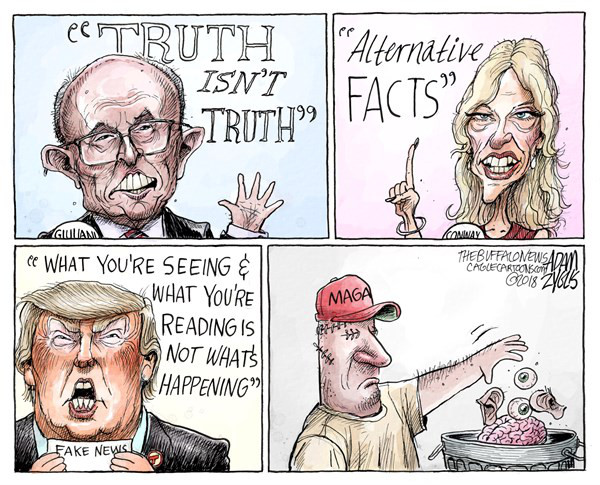Dissecting Fake News
Who Do You Trust?

We can almost all agree that the news space is peppered with fake news. The UCSB team suggests that we fact check stories before sharing them — an excellent idea. My issue is with the manner they recommend that we go about doing so.
The article mentions that trust in the mainstream media is very low. I have read that it’s less than 5 percent, yet the team insists that we should refer to the mainstream media establishment to fact check. We are asked to trust sources like CNN, the New York Times, and the Washington Post, each of which, over the course of the decades, have led the public to a consensus of 95 percent that they are not credible.
Who got it wrong? The 95 percent or the 5 percent?
Decades ago, the former director of the CIA, William Colby, said, “We own everyone who is anyone in media.” In 2012, a law was passed in Congress allowing propaganda to be legally used against the American public. Prior to that, it was only legal for our propaganda to be used overseas.
If we are using the mainstream media as our source, we can be reasonably assured that we are receiving the news that the intelligence agencies want us to hear. But, I ask you to honestly answer for yourself, to what extent would you trust the word of the CIA, etc?
The article also implores us to make sure that multiple news outlets have parroted the same “news” as an indication of its veracity. If multiple outlets are expressing the same version of events, isn’t it more likely that this version is a talking point, emanating from a central source? If so, doesn’t that make the source less credible, not more credible? If many witnesses report their personal observations from an event, there will usually be inconsistencies in some of their reports.
Most news outlets are under common ownership now, and they save money by getting their news from other centralized sources, which is a real threat to accurate, balanced, and diverse reporting. It seems that our present system of media is broken. Crowd-sourced, decentralized, independent voices, empowered by technology, are offering more accurate, faster, and more diverse news reporting than the legacy media can.
In the recent local fires, for example, Twitter and Facebook were lit up with pictures and firsthand, on-site reports, providing much more accurate and instant reports than were available from establishment TV or radio sources. A media organization simply cannot compete with the army of the populace, cell phones in hand, live streaming and sharing instantaneously.
In this new reality, we have many media choices.Some amateur reporting will no doubt be false, misleading or inaccurate. However, social media’s accountability is a serious check on such false reporting. Are you going to speak lies to your close friends? Why? How long before your reach will approach zero if you do? The implicit social contract makes citizen reporting via social media possibly as disciplined or more than commercial professional reporting.
Have you ever been to a major public event, then later watched the news reports and felt like the reporter was way off? I know that I have.
We are in a new world where we have many diverse information sources available to us. How are we to determine who is credible, and who is fake news? There is no easy answer.
The methodology of a courtroom provides a good example of an attempt to get to the bottom of a factual controversy and make a decision about it. Likewise the scientific method, and peer review process. Of course news is moving too fast for either of these to be an answer.
The only answer that I see is to develop critical thinking, to learn to discern facts from opinion, and also to give more credence to sources that tend to prove themselves accurate and whose reporting stand the test of time, while turning off sources that have been proven over decades to be 95 percent untrustworthy.



